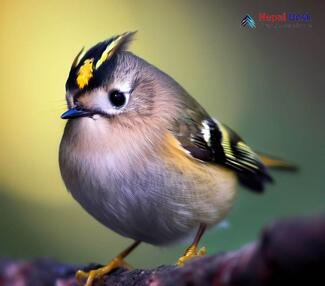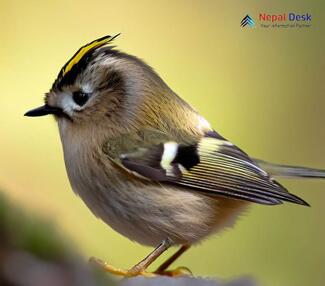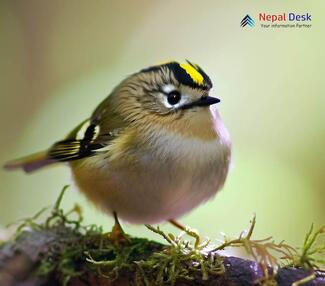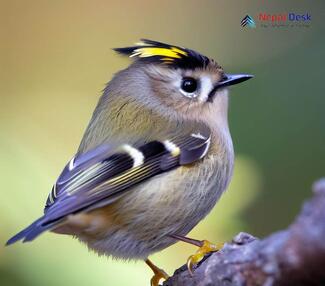Nepal, blessed with stunning natural beauty and rich biodiversity, houses a fascinating array of bird species. One such avian gem is the captivating Goldcrest (Regulus regulus), a small passerine bird that brings joy to birdwatchers and nature lovers alike. First described by Carl Linnaeus in 1758 as Motacilla regulus, it was later moved to the warbler genus Sylvia before settling in its current genus thanks to French zoologist Georges Cuvier. Known as the King of Birds in European folklore, it bears a resemblance to the common firecrest (Regulus ignicapilla).
Discovering the Goldcrest
One of Europe's tiniest birds, adult Goldcrests measure just 8.5-9.5 centimeters in length and weigh only 5-7 grams. Their notable features include a dazzling gold crest atop their heads, an olive-green body with a light yellow belly, and two white wing bars on each side.
Goldcrests are famous for their speedy, agile movements as they enthusiastically dart through trees searching for food, which mostly consists of small insects and spiders. Their distinctive high-pitched song helps enthusiasts identify them amidst dense foliage.
Habitat and Distribution: Finding Goldcrests in Nepal
Nepal's varied landscape offers perfect living spaces for the Goldcrest. They primarily reside in coniferous forests at altitudes between 2,500 and 3,900 meters above sea level. Prime locations for spotting them are Langtang National Park, Sagarmatha National Park, and Annapurna Conservation Area.
Although Goldcrests are non-migratory residents of Nepal, they may move up or down in altitude depending on weather conditions and food sources. During harsh winters or scarce times, they might shift to lower woodland areas with milder temperatures and more abundant resources.
A Memorable Encounter
Witnessing a Goldcrest in its natural environment is an exciting and rewarding experience. Patience is crucial as their small size and swift movements make them difficult to spot. Using binoculars or a long-range camera lens improves your chances of observing these petite birds.
Finding a Goldcrest in Nepal not only provides a unique wildlife experience but also highlights the significance of conserving the nation's incredible biodiversity. Through joint efforts in conservation, future generations can continue to appreciate the enchanting beauty of the Goldcrest and other cherished species native to this extraordinary land.




